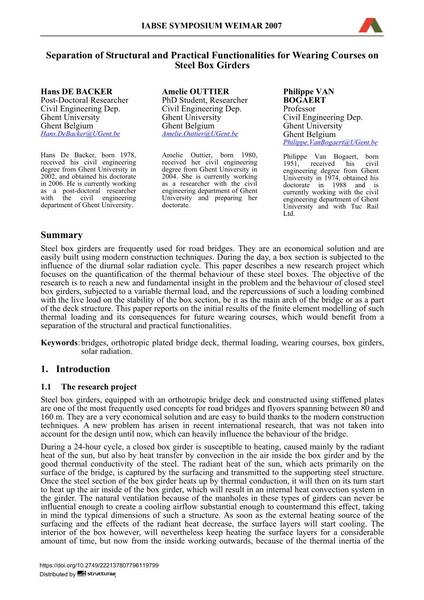Separation of structural and practical functionalities for wearing courses on steel box girders

|
|
|||||||||||
Bibliografische Angaben
| Autor(en): |
Hans De Backer
Amelie Outtier Philippe Van Bogaert |
||||
|---|---|---|---|---|---|
| Medium: | Tagungsbeitrag | ||||
| Sprache(n): | Englisch | ||||
| Tagung: | IABSE Symposium: Improving Infrastructure Worldwide, Weimar, Germany, 19-21 September 2007 | ||||
| Veröffentlicht in: | IABSE Symposium Weimar 2007 | ||||
|
|||||
| Seite(n): | 82-83 | ||||
| Anzahl der Seiten (im PDF): | 8 | ||||
| Jahr: | 2007 | ||||
| DOI: | 10.2749/222137807796119799 | ||||
| Abstrakt: |
Steel box girders are frequently used for road bridges. They are an economical solution and are easily built using modern construction techniques. During the day, a box section is subjected to the influence of the diurnal solar radiation cycle. This paper describes a new research project which focuses on the quantification of the thermal behaviour of these steel boxes. The objective of the research is to reach a new and fundamental insight in the problem and the behaviour of closed steel box girders, subjected to a variable thermal load, and the repercussions of such a loading combined with the live load on the stability of the box section, be it as the main arch of the bridge or as a part of the deck structure. This paper reports on the initial results of the finite element modelling of such thermal loading and its consequences for future wearing courses, which would benefit from a separation of the structural and practical functionalities. |
||||
| Stichwörter: |
Brücken Hohlkästen Solarstrahlung
|
||||
